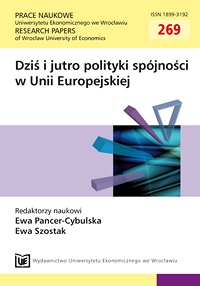Źródła wahań realnych kursów walutowych na Litwie, Łotwie i w Polsce w kontekście kryzysu gospodarczego
Sources of fluctuations in real exchange rates in Lithuania, Latvia and Poland in the context of the global financial crisis
Author(s): Marek DąbrowskiSubject(s): Economy
Published by: Wydawnictwo Uniwersytetu Ekonomicznego we Wrocławiu
Keywords: real exchange rate; stochastic model of an open economy; structural shocks; vector autoregression model
Summary/Abstract: Despite the fact that all Central European countries are member states of the European Union and have a common goal as to the monetary integration, which is euro adoption in the future, they stick to various exchange rate regimes. The goal of this study is the identification of structural shocks behind the changes of real exchange rates in Lithuania, Latvia and Poland, i.e. countries that chose to adopt either hard peg or floating. The analysis was carried out within the framework of structural vector autoregression (SVAR) model and structural shocks were divided into three categories: supply, demand and monetary shocks. The main findings were as follows. Firstly, it turned out that real exchange rates were shaped by: (1) demand shocks before the EU accession of all three countries and in the case of Poland also after 2004; (2) supply shocks in the case of the Lithuanian lit and the Latvian lat after 2004. Secondly, it was found that in two Baltic states a gradual elimination of overvaluation of their currencies took place during the crisis although at the expense of a shift in the burden of an adjustment on real output. In Poland real exchange rate overshot its free of (structural) shocks path at the initial stage of the crisis and then gradually adjusted to it.
Journal: Prace Naukowe Uniwersytetu Ekonomicznego we Wrocławiu
- Issue Year: 2012
- Issue No: 269
- Page Range: 82-96
- Page Count: 15
- Language: Polish

